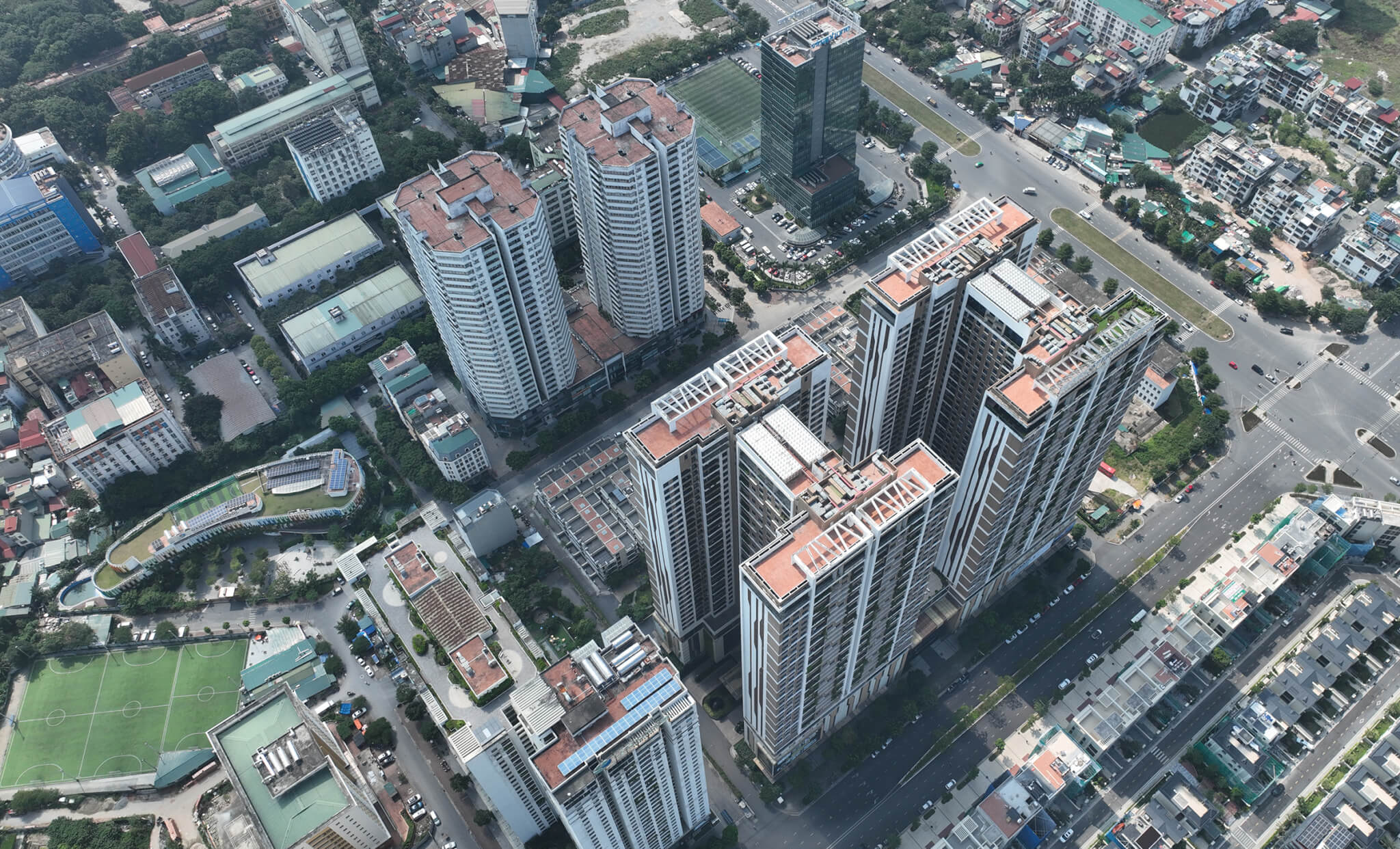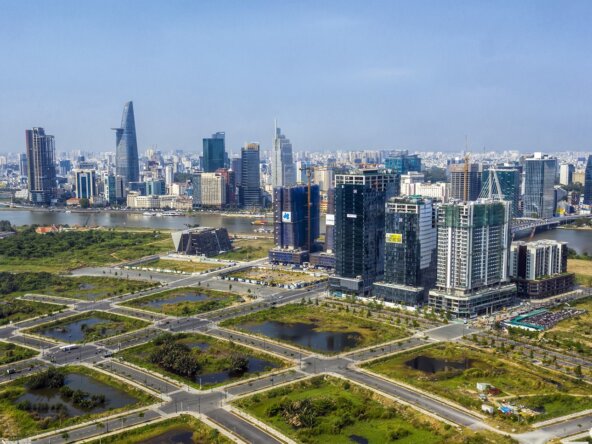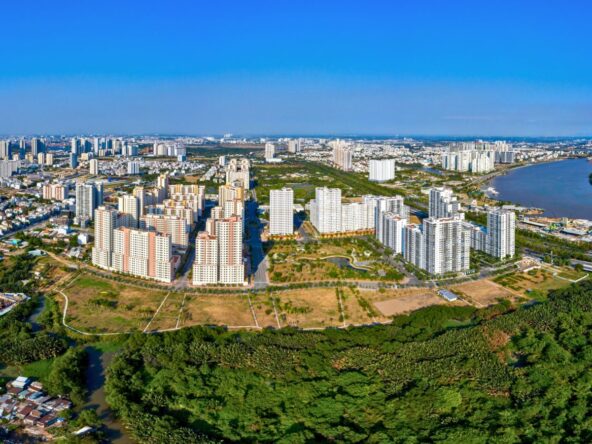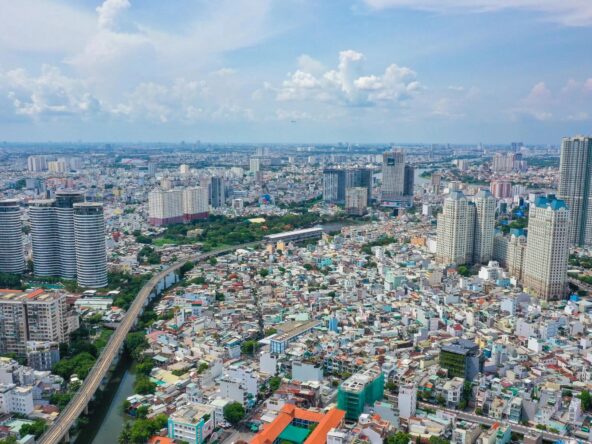While apartment prices in Ho Chi Minh City last year decreased by 2%, prices in Hanoi increased by nearly 15% and became a “hot” market for investment from southern businesses.
At a press conference on the morning of January 9, Director of CBRE Vietnam Housing Development Department Vo Huynh Tuan Kiet said that after the epidemic, the price increase momentum of Hanoi apartments maintained about 14% per year. In 2023 alone, the average primary selling price in Hanoi will increase by nearly 15% year on year, reaching VND 53 million per m2. This is equal to the average price in Ho Chi Minh City in the period of 2020-2021.
Meanwhile, primary prices in Ho Chi Minh City have leveled off at more than VND 60 million per m2, down nearly 2% compared to 2022.
In the secondary market, Hanoi condominiums continued to increase in price quarter-on-quarter while HCMC declined throughout 2023. In the fourth quarter of 2023, Hanoi apartment prices will increase by 5% year on year, averaging VND 33 million per m2.
Kiet explained that limited supply while high selling prices of new projects have boosted the vibrant secondary market. In contrast, in Ho Chi Minh City, the average secondary selling price is VND 45 million per m2, down 5% compared to 2022. The decrease is concentrated in the high-end segment but located far from the center, the connection is not favorable.
The supply of new condominiums in both cities is concentrated in the suburban area. In particular, the West and East urban areas of Hanoi contribute more than 60% of the supply of new housing, while the East of Ho Chi Minh City leads with nearly 80% of the basket of new goods.
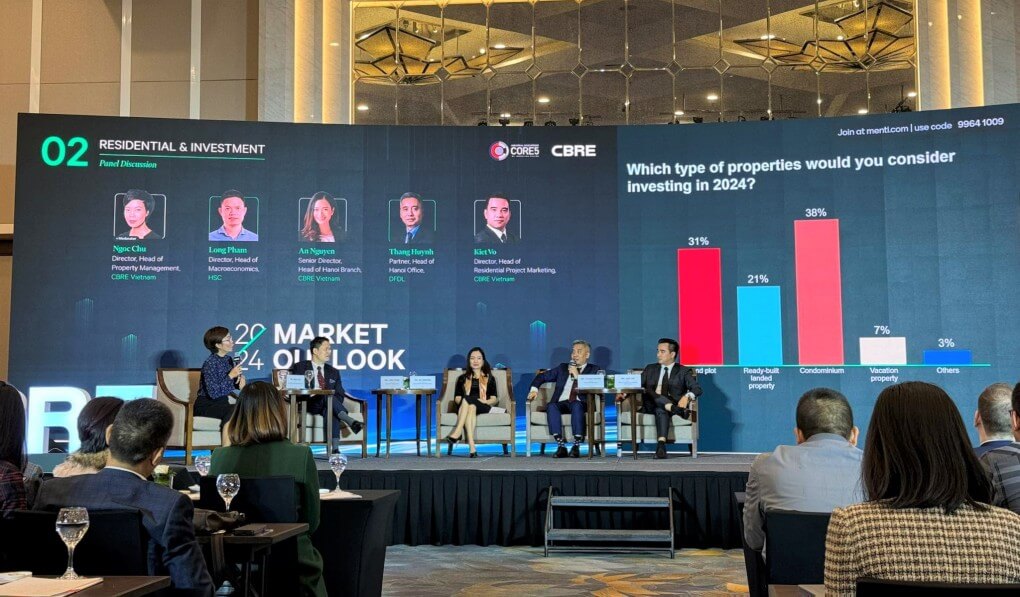
Overview of the press conference announcing the 2023 market report organized by CBRE Vietnam on the morning of January 9.
The room for price growth in Hanoi and the North in general has boosted the northern trend of southern real estate enterprises and foreign developers in the last two years, according to experts.
For example, late last year, CapitaLand Development (CLD) acquired a part of Vinhomes Smart City urban area and announced the Lumi Hanoi high-end project with a total development value of about VND 18,000 billion. In the East of Hanoi, Mitsubishi Corporation (MC) also joined hands with Vinhomes in The Metropolitan subdivision, after cooperating to develop two subdivisions in Vinhomes Grand Park, Ho Chi Minh City.

The Metropolitan Vinhomes Ocean Park subdivision
In addition, the trend of Northern progress is also promoted by a series of big players such as Keppel Land – Phu Long with Mailand Hanoi City project, Phu My Hung with Hong Hac City project in Bac Ninh or Nam Long with Nam Long Hai Phong project.
Explaining the above trend, Ms. Nguyen Hoai An, Director of Hanoi Branch, CBRE Vietnam, said that for many years, the Hanoi and suburban markets have been “dominated” by a number of big names, less diverse in terms of developed brands compared to Ho Chi Minh City. In recent years, the advantages of this market have increased sharply with the speed of transport infrastructure development and population size. The ring roads, bridges and expansion roads have promoted connectivity, creating potential for the land fund to develop urban areas in the suburbs. With this abundant space, many large investors after the development time in the South have “ambitions” to move North.
Mr. Vo Huynh Tuan Kiet also said that the Hanoi market, especially the apartment segment, has a slower development rate than Ho Chi Minh City by about 3-5 years. Because foreign investors when joining Vietnam give priority to Ho Chi Minh City, this market soon matures in terms of product quality, policies, sales methods, investment thinking. However, because of early and fast development, recently, land funds in Ho Chi Minh City have become increasingly scarce while prices have risen to a very high threshold compared to the affordability of many people.
CBRE experts assessed that the promotion of the North by foreign and southern investors will help the apartment market reshape product quality, management standards and utilities.
“The development gap between Hanoi and Ho Chi Minh City apartments has narrowed from 3-5 years to 1-2 years, maybe even equivalent in the future,” said Mr. Vo Huynh Tuan Kiet.

